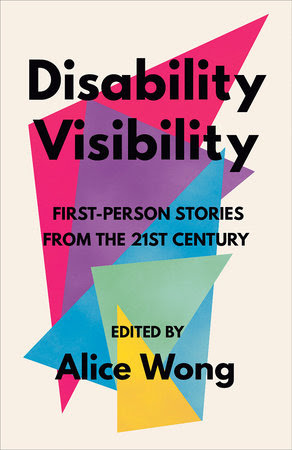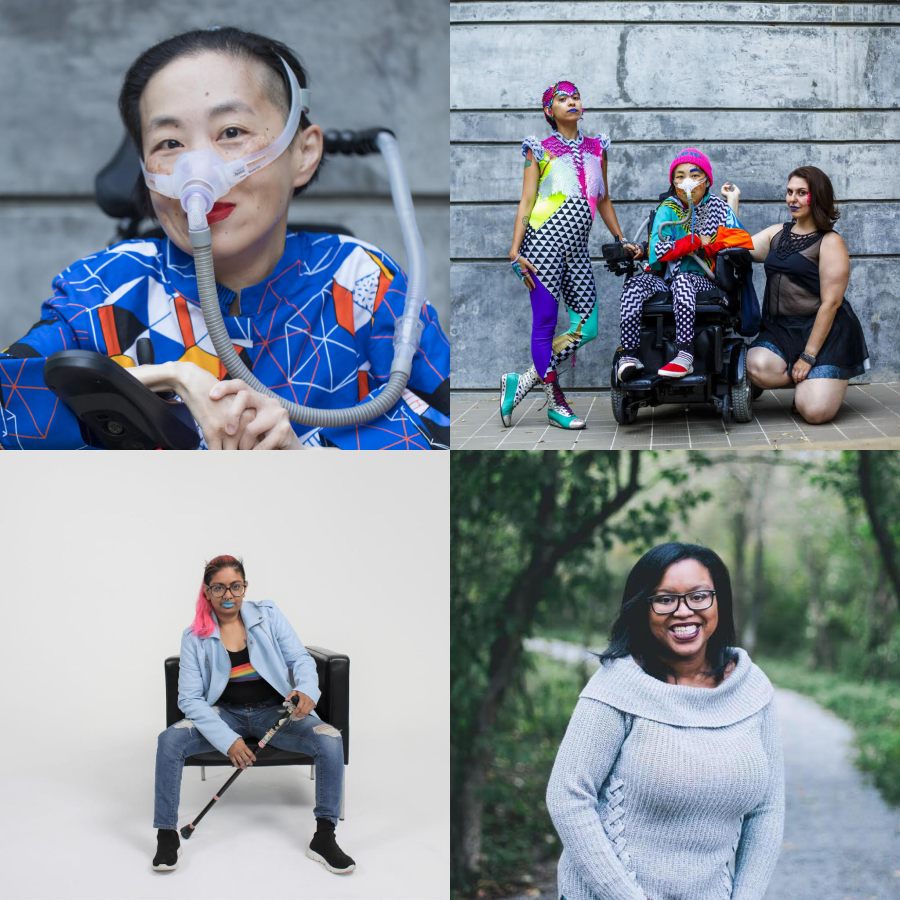In her introduction to Disability Visibility: First-Person Stories from the 21st Century, anthology editor Alice Wong issues a call to action: “I want to center the wisdom of disabled people and welcome others in, rather than asking for permission or acknowledgment.” Wong put these words to the page before COVID-19 swept the globe or ongoing protests for Black lives changed cities and conversations — but they feel more resonant than ever. In this kaleidoscopic collection, Wong and her contributors provide not just a snapshot of what disability has meant in the past 20 years, but an urgent invitation to take that understanding forward. How many times have you heard that we’re “in a new world” recently? Disability Visibility challenges us to consider what a world with disability at its core can look like.

Photo courtesy of Alice Wong
Across its four sections — Being, Becoming, Doing, and Connecting — this anthology illustrates the power of disabled life, individually and in community. “I was very selective and very intentional to make sure multiply-marginalized disabled people are really at the forefront,” Wong explains. “And I really wanted complex stories. I really want people just speaking their truth… real talk about what it’s like for them. That, to me, is the most important thing, especially for nondisabled readers: to be uncomfortable, just dive in, and try to get some sense of the reality of being disabled in this century.” The result is a vibrant catalog of perspectives on visibility, activism, community care, joy, and how to keep going. Sound useful at the moment? (It is.) And that discomfort Wong references comes up often, which is the point. These stories aren’t just about how we survive as disabled people now; they’re designed to spark questions, challenge conventional wisdom (even and especially within disability communities themselves), and point the way toward something more.
“We have such unique and effective ideas for change, if people would just pay attention to what we have to say,” says contributor Mari Ramsawakh. “Disabled voices have so often been pushed out of conversations and devalued, especially more marginalized disabled folks such as disabled BIPOC and trans folks… Our justices are intertwined and it’s important that we not only uplift disabled voices, but Black and Indigenous disabled voices, and especially queer, trans, and Two-Spirit voices, because they are the ones who are most affected and their knowledge is key to finding justice.” Disability Visibility never lets readers push that fact aside, which is what makes it so vital to this moment and beyond. Rather than a whitewashed, linear disability rights narrative, these pieces offer complex realities that don’t shy away from the work involved in disability, in activism, or the intersections of both.

Clockwise from top left: editor Alice Wong, contributor Sky Cubacub (with Alice Wong and Nina Litoff), contributor Keah Brown, and contributor Mari Ramsawakh. Alice Wong photo credit to Eddie Hernandez Photography, Sky Cubacub photo credit to Grace DuVal.
Some essays hit home particularly hard right now — Keah Brown’s “Nurturing Black Disabled Joy,” for instance, or “On the Ancestral Plane” by Stacey Park Milbern, who passed away in May. Sky Cubacub’s piece on radical visibility feels especially resonant as folks navigate how to protest in a pandemic. “The protests plus COVID make for a very interesting combination,” says Cubacub, the founder of Rebirth Garments. “Face masks serve a double purpose; they are good for trying to prevent the spread of COVID and for masking identities… it is a balance between being anonymous at protests and being radically visible in the other aspects of life.”
“I’ve been working as an activist for years, translating the disabled experience to able-bodied people via the sharing of my experiences in an open and sometimes visceral way,” says contributor Elsa Sjunneson. “I think it’s more important than ever as we fight against social institutions which harm people at multiple intersections to talk about how people at those intersections are harmed — and how we look to support them.” Disability Visibility provides a starting point for that conversation and a blueprint for building a “new world” that’s tangibly, spectacularly better than the old one.
“Especially now, it feels like this anthology in particular is so important,”Brown points out, “because disabled people are marking our place in history, in the world even. We are not apologizing for the space we take up and we are not just worst case scenarios or people worthy of dying in pandemics. We are people first and people always… I want [readers] to know that I, a black disabled and queer woman will not be going down without a fight. Whether you share those identifiers or not you shouldn’t go down without a fight either. Even if that means fighting yourself to prove that you are worthy. We all have to start somewhere.”
Disability Visibility is a landmark resource for understanding disability as a life experience and celebrating the wisdom it can bring. It demonstrates how to find hope in tumultuous moments, the importance of adapting anew each day, and the need to honor the past even as we look forward. “I do want to make sure there’s something for everyone,” says Wong. “And I think overall, raising the bar is the best of what it’s all about. [If] that ruffles some feathers, that’s fine by me.”
Disability Visibility: First-Person Stories from the 21st Century is available June 30 from Vintage Books. Visit the Disability Visibility Project for more information on the anthology and its companion resources.



@wadeacar thank you for this. Do you have an email I could contact you on regarding ‘disability’ stuff on here, as I’ve emailed three different ASers all of whom allegedly ”welcome” contact from disabled site users, none of whom have bothered getting back to me? No problem if you don’t want to.
Dunno if it makes me feel better or worse that I’m not the only one with this problem
@valentine I understand what you mean. I feel really unwanted, especially after ”the team” claiming that they know disabled people are one of the groups on here they’ve let down. They made that comment after the racist A-camp disaster so they’ve had a LONG TIME to fix it.
I was hoping that perhaps my “hey can you maybe get some disabled voices re: lockdown instead of posting about ‘you’re not really gay if you can’t grind on someone on a club lol'” message just got eaten by the ask box…
@valentine sadly I don’t think so! I’d say private message me if you want but the feature is still disabled ( ironically!)
yes! been excited for this to come out and glad to see it featured on AS
thank you for this review/feature! i’m so excited to read this